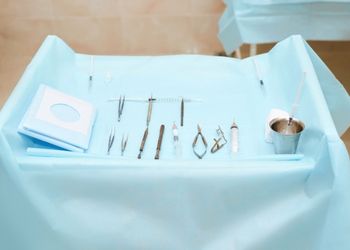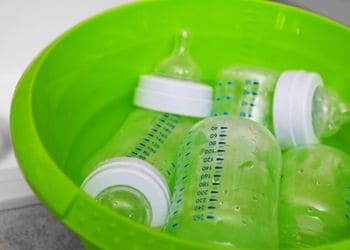What is the best way to eradicate germs and reduce the risk of infections? The answer can all depend on the situation and threat. You may hear stories of medical practitioners putting equipment in a flame for sterilization in extreme circumstances. But, should you use fire to kill germs or is there a better way?

It is possible to use fire to kill germs, control the spread of disease and sterilize items before use. Objects heated in flames can become germ-free and safer to use, such as in medical situations. Fire can also destroy diseased carcasses or crops to stop a problem from escalating. There are times when fire is the best choice and others where there are better choices.
Fire sterilization is one of many methods for sterilization in a much wider series of practices. It helps to be aware of your options when trying to kill germs for the safest and most effective approach. This means considering the following.
- The four main categories of sterilization approaches
- How fire kills germs
- The pros and cons of sterilizing needles and metal objects with fire
- The use of fire in disease control.
- Alternative physical sterilization methods
- The use of chemicals like alcohol to kill germs
Table of Contents
What are the four main categories of sterilization?
There are four main forms of sterilization used in various industries and situations to kill bacteria and viruses. The precise choice within those categories will depend on the situation, the likely reaction of the organism in question, and the urgency of the situation.
In this guide, we are going to focus on physical methods for sterilization. This means using other physical forms, typically with the generation of heat, to remove or kill the bacteria and create a sanitary condition.
We will also look at some of the chemical methods for killing germs as a comparison and their potential fire risks.
Aside from that, the two other main methods of sterilization are radiation and ultrasonic.
How does fire kill germs?
Temperature plays a big part in the sustainability of germs and bacteria. Typically, they need temperatures between 40 to 140 degrees Fahrenheit to survive.
Working with higher heat is the best option for dealing with germs because they should die off completely. With colder temperatures, the germs may simply lie dormant until the temperature rises once more.
Because heat is such a key factor in effective sterilization, it makes sense that we would see fire brought into sterilization treatments.
A controlled flame is a great way of generating a suitable temperature to kill germs and bacteria on a suitable surface.
Of course, you need to be sure that any material or implement you wish to sterilize is fire-resistant before putting it directly in a flame. Scientists may put heat-proof items in the flame of a bunsen burner.
Survivalists may prefer a simple lighter. Either way, the principle is the same.
Sterilizing needles and medical equipment with fire.
Fire can play a part in treating wounds through sterilization.
Typically, there is a second step in the process where the fire heats up a metal implement and that it is used against an injury. There are stories of hot knives cauterizing blood vessels and metal plates sealing wounds shut due to the heat.

This isn’t a good idea today as there is still a risk of infection in the branded tissue. This extreme approach of using heat and fire to sterilize equipment is still possible at home with the right tools.
There are also people that will use fire to heat up metal needles for sterilization. This could work well when trying to remove splinters without increasing the risk of infection.
Holding a needle in the flame of a lighter could be more practical than using boiling water. Still, you need to be careful with the source of the fire and when holding the needle.
The use of fire in disease control.
There are other incidents where direct fire methods of sterilization are appropriate, but they are pretty extreme.
Fire doesn’t just kill germs but can also destroy organic matter infected with the disease in question.
Therefore, if there is a severe outbreak of a dangerous disease and government agencies want to control the spread, controlled fires could be the answer.
Incineration is drastic but not as uncommon as you might expect. Hospitals use incinerators to deal with waste material rather than send potentially infected matter out to other facilities.
Fire is used as a way to burn diseased livestock or crops to stop the spread. A good example of these came with the Foot and Mouth outbreak in the UK.
Farms with cases of the disease saw their herds slaughtered and burned to eradicate the illness as quickly as possible.
Does fire kill mold?
Dangerous organisms can quickly build up on all kinds of surfaces under the right conditions. Germs and viruses are some of the more common problems because it is so easy to spread them from our own bodies to surfaces and implements.

We can cough or sneeze and release airborne particles too. It is a little different with mold because these living organisms need the right temperatures and moist conditions to develop.
You can get mold building on food left out too long, on grills left uncovered over the winter, and on walls that have suffered water damage.
You can learn more about whether fire can kill mold in my other guide. But, the basic premise is quite similar to that of dealing with germs, bacteria, and viruses.
The temperature and the conditions that allow the organism to live need to change so it can die. The difference is that if you burn mold on a cooking grill, you may leave it dormant rather than eradicate it altogether.
The same is true for heating an area of damp wall after a flood. Heating mold can help, but you need chemical eradication processes more than physical to get the job done.
Alternative forms of physical sterilization.
Physical sterilization doesn’t just mean heat from a fire. There are other ways that you can use temperature and physical processes to kill bacteria.
Dry heat treatments could be a lot safer than using fire where appropriate.
Hot ovens set to a high enough temperature could prove to be an effective way to kill the germs, as opposed to freezers that would merely put the germs in a state of dormancy.
A good alternative to using dry heat for physical sterilization is to use boiling water and steam. This can be a lot safer in many situations because there isn’t the danger of the high heat and you still aren’t using a flame.
With that said, there is a risk of burns from boiling water and steam when not handled correctly. You may also find that the process is less efficient depending on the situation.
Steam and water sterilization for baby bottles
Using fire will not work well when dealing with items that will burn or melt in the flames.

For example, you might have an item made of plastic that you want to sterilize as best you can for the safety of your family. Chemical treatments may not be appropriate either.
So, you need a different type of process such as hot water or steam. A good example is baby bottle sterilization. you don’t want to use chemical treatments here for safety. Steam or boiling will be your best options.
The use of chemicals like alcohol to kill germs.
The most common way to kill germs and sanitize areas now is through chemical cleaning products. We can spray pretty much anything with some form of surface disinfectant and know that we will get rid of a lot of the germs.
The broad range also means some much safer products than before. Then there is the use of alcohol and hand sanitizer for fast personal germ removal.
Of course, we are all familiar with the potential for germ eradication through alcohol with the prevalence of hand sanitizer stations during the Covid-19 pandemic.
A final important note here is that while chemical sterilization approaches are great for killing germs as an alternative to fire, the products themselves can be a fire risk because of the potent chemicals and vapors involved.
You always need to be careful how you use these products and where you store them to avoid problems.
To summarize, while fire can seem like a pretty old-fashioned approach for sterilization, there are times where it is highly effective. You can still put the end of a needle in the flame from a lighter instead of in hot water.
But, it is also important to be aware of other physical and chemical methods to find the best fit, such as steam cleaning baby bottles and chemical sanitizers for our hands. Make sure any method chosen is effective for germ removal but also safe for everyone involved.